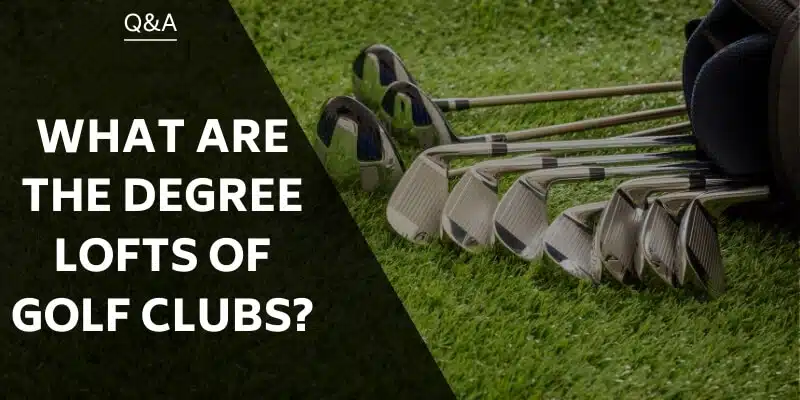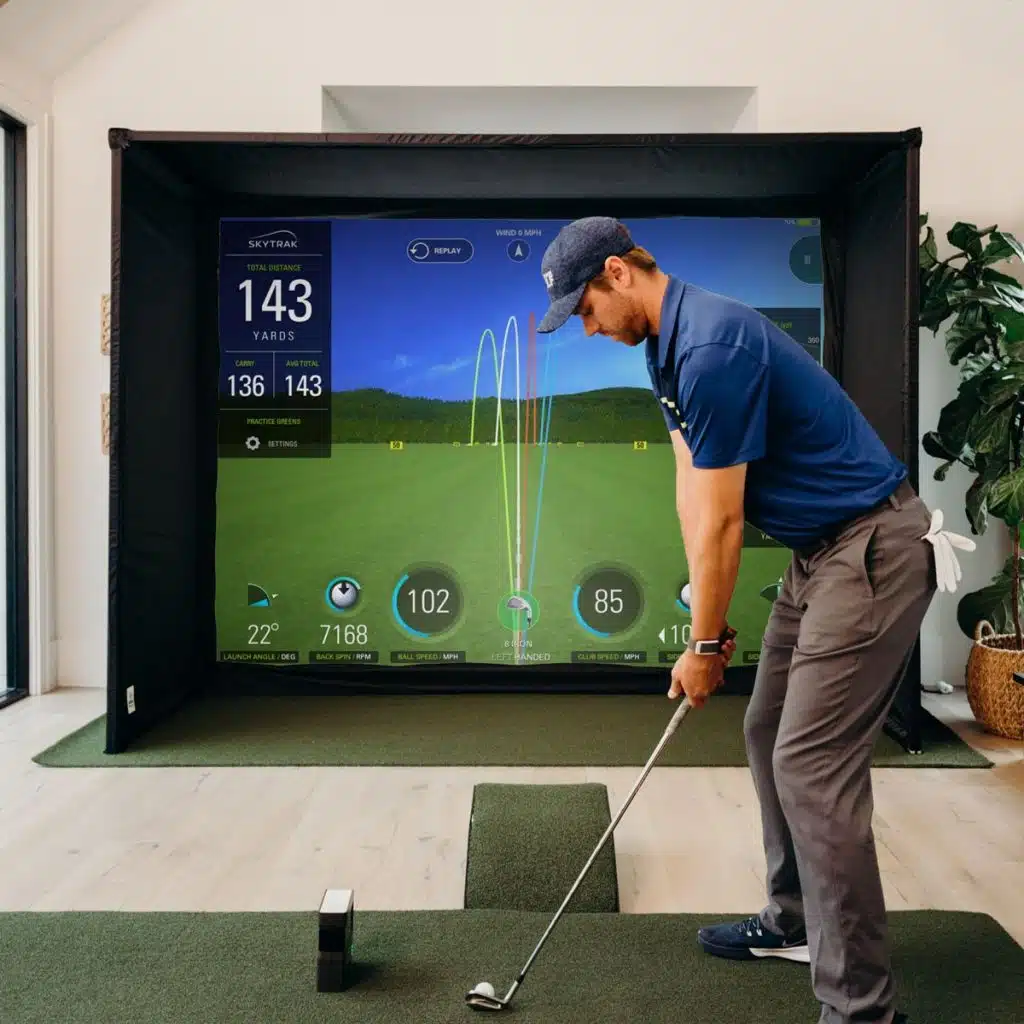In this post, I am conducting a Trackman review to see what a $20,000 plus launch monitor has to offer, as well as who it would add value to the most.
The launch monitor market has exploded in recent years offering a variety of products that range from a couple of hundred dollars to over $40,000. These devices vary in accuracy and features and are tailored to the demands of different role players in the industry.
Things To Consider Before Buying a Launch Monitor
When buying a launch monitor you will need to consider a variety of factors before making your final decision. I have provided some of the tips I feel are most important to take into account while shopping.
Budget
Launch monitors vary in price. You can find some launch monitors for under $200, and other products will set you back more than $40,000. Higher-priced launched monitors are generally used by golf coaches, professionals, and retail outlets, who depend on astute data analysis to make a living.
If you are on a tight budget, you can still pick up a great device. But, be prepared for less analysis than you may enjoy from a higher-priced product.
Accuracy
If possible, I would suggest testing out a few launch monitor products to see how they compare in terms of accuracy. Many of the affordable devices do not measure clubhead speed, which may impact the final results for each shot. If you want millimetric accuracy you should be prepared for a sizable launch monitor investment.
You will be surprised by the variations in results from different devices. The last time I tested two launch monitors simultaneously I was getting a 15 yard difference in the distance on the same shot.
Technology
There are two types of technology used in the production of launch monitors, radar and photometric. Radar launch monitors are typically set up behind the strike zone and have been known to be more accurate at recording data related to speed. Photometric devices are placed side on from the strike zone and are efficient at determining spin and direction data.
Ernest Sports have gone a step further, by creating a hybrid launch monitor that contains radar and photometric technology. As a result, you get the most efficient qualities of both technologies.
Indoor and Outdoor Launch Monitors
You can find portable launch monitors that enable you to make use of the device both indoors and outside. For most of us, that is what we after. A product that enables us to practice at home, but also analyze our performance on the course and the range.
However, there are options that are indoor only and will require an overhead setup. I don’t recommend this, as it really helps having your device out on the range and the course to see how you perform in different conditions.
Simulator Software
The final factor to consider is what simulator software is the launch monitor compatible with? Software varies in terms of functionality, and the required operating software. Certain software only functions on windows, while others work on iOS and Android as well.
Trackman Review
Pros
- Millimetric Accuracy
- Results of your shot displayed on your smartphone for convenience
- Dual radar system
- Measures the clubhead’s exact point of impact with the ball, for increased accuracy
Cons
- One of the most expensive launch monitors on the market
- Needs to be calibrated to detect targets in an outdoor environment.
- You need ample space between the hitting mat and the impact screen for the device to detect ball flight more accurately. If you are using it indoors.
There are more than 700 tour professionals who rely on the Trackman 4 for accurate shot analysis. That gives you an idea of the level of detail that the Trackman offers.
The launch monitor is fitted with dual radar technology, that enables the device to focus on the clubhead and the ball at the same time. As a result, the Trackman can factor more data points into its calculation and provide you with more accurate insight.
There is no question that the Trackman 4 is the creme de la creme of launch monitors. However, that means it fetches a premium price, which is often beyond the budget of the average golfer. It is for this reason that the Trackman 4 is more common among those who work in the golf industry, rather than the social player.
Features & Benefits
Let’s now assess what the features of the Trackman 4 are and who they will benefit the most.
Dual Radar Technology
One of the core differences of the Trackman 4 in comparison to its competitor products, is its dual radar technology. This enables the launch monitor to analyze club and ball data simultaneously, unlike single radar devices. As a result, the Trackman is able to provide millimetric accuracy.
Data
The Trackman 4 provides a deep analysis of ball and club data for every shot. Here is a list of the data it analyzes.
Ball Data
- Ball speed
- Carry
- Launch angle
- Smash factor
- Spin rate
Club Data
- Club path
- Face angle
- Dynamic loft
- Attack angle
- Club Speed
Accuracy
To test the accuracy of the Trackman 4 launch monitor I decided to hit five drives, 7-iron, and sand wedge shots. I have been fortunate enough to test many launch monitors in my life, so I know the results it should be displaying. If I had to report back on every data point, this article would be outrageously long, and you would not have any time left to actually use your launch monitor.
So, I have given a breakdown of the analysis of the most common data points, such as ball speed, launch angle, backspin rpm, carry, and total distance.
Trackman Ball Speed Readings
- Driver – 162.1 mph
- 7-iron – 127 mph
- Sand Wedge – 88.5 mph
The ball speed readings delivered by Trackman were exceptional. From driver through to my 56- degree wedge shots, the launch monitor produced results that I would expect, based on previous averages.
Trackman 4 Backspin RPM
- Driver – 2510 rpm
- 7-iron – 6100 rpm
- 56 Degree Wedge – 10,900 rpm
My backspin RPM figures throughout the bag were in line with my historical averages. So far the accuracy of the Trackman 4 is on point. Next, we look at the launch angle results.
Trackman 4 Launch Angle
- Driver – 12.7 degrees
- 7-iron – 18.8 degrees
- Sand Wedge – 30.3 degrees
The launch angle data provided the degree of launch, I would usually expect to see from my driver, 7-iron and 56- degree wedge. So far, the accuracy has been pinpoint. Now we look at the distance measurements.
Trackman Carry Distance
- Driver – 285 yards
- 7-iron – 178 yards
- Sand Wedge – 98 yards
Yet again, the Trackman’s accuracy was stellar. The carry distances all check out and are where they should be, on an average shot.
Trackman Total Distance
- Driver – 304 yards
- 7-iron – 188 yards
- Sand Wedge – 98 yards
The final data point that we analyzed in our test is total distance. As we have seen throughout the Trackman review, its accuracy was exceptional. At no point were the readings significantly off the mark, and that trend continued into the total distance test of the Trackman review. The total distance I achieved with my driver, 7-iron, and sand wedge are in line with how I usually perform.
Indoor Setup
If you intend to use your Trackman device in an indoor environment you best have ample space. The launch monitor is required to be 8-12 feet away from the hitting mat. That allows the radar enough room to give it an unobstructed view of the club, the ball, and the impact zone.
Furthermore, you must allow for at least 13-feet between the impact screen and the hitting mat. This gives your ball sufficient distance to get airborne and enables the Trackman 4 to more accurately calculate dynamic loft, spin, direction carry, and total distance.
Weight
Although the Trackman 4 is not the heaviest device on the market it still weighs 6.2 pounds, which is no feather to lug around 18-holes. Considering that you already have 14 clubs, a few sleeves of balls, rain gear, and refreshments. However, it allows you the option to set it up indoors when you are home, and take it with you to the driving range or golf course.
Trackman Price
The Trackman 4 is one of the higher-priced launch monitors on the market. That is why it makes more financial sense to a business or individual who profits from the game of golf. If you are thinking about this launch monitor you should have a budget of $20,000 plus.
Trackman 4 Alternatives
1. Foresight Sports GCQuad
The Foresight Sports GCQuad is another premium launch monitor option. However, unlike the Trackman 4, this is a photometric device. As I mentioned earlier, photometric launch monitors have been found to deliver enhanced accuracy when it comes to spin and direction.
The GCQuad is equipped with four cameras that allow it to capture and analyze multiple data points of your club and ball at impact. The ability to capture and analyze this level of data enables the GCQuad to provide in-depth analysis of each shot.
If I hadn’t gotten your attention yet, then maybe the fact that Rickie Fowler and Bryson DeChambeau operate with the GCQuad, will. It’s helping Bryson to train for his goal of driving the Par 5 6th at Bay Hill. He will need every slice of data necessary to pull that off, which is where the GCQuad comes in.
The Foresight device is half the price of the Trackman and performs on a par in terms of accuracy. In fact, I recently conducted a GCQuad vs Trackman review, where you can see how the two premium products compare.
The GCQuad is engineered to perfection and deserves the praise it gets from tour pros and golf coaches. If you are a coach, own a golf retail store, or make a living from hitting golf balls, I would suggest learning more about this product.
2. Ernest Sports ES16
The ES16 launch monitor from Ernest Sports is a rare hybrid device. It comprises Doppler radar and photometric technology to enhance the accuracy of speed and spin measurements. The ES16 is more affordable than the Trackman and measures an impressive quantity of club and ball data points.
One of the downsides of the ES16 is that it partners with an app that only functions on Windows 10. So, if you use iOS or Android operating software, you may want to consider other options.
The ES16 only weighs 3 lbs making it easy to transport around 18-holes, and it is waterproof. Furthermore, the ES16 links up to The Golf Club, e6, and Perfect Parallel golf simulators, to spice up your practice sessions.
If you have a bit of a budget and are looking for a detailed analysis of every shot, then the ES16 is certainly worth considering.
3. TruGolf TruFlight 2

The TruGolf TruFlight 2 is an overhead launch monitor, designed for golf coaches and retail outlets. The device uses photometric technology, capturing images from the TruFlight’s three cameras. TruFlight’s specialty is delivering accurate spin and direction readings.The launch monitor uses its vantage point to gain a clearer view of the clubface and the ball, thus enabling it to capture a wide variety of data points.
Since this launch monitor needs to be set up overhead, it can only be used in an indoor environment, which may not work for the average golfer.
Finally, the TruFlight 2 partners up with the e6 launch monitor to enable it to play a full 18-holes on 100 iconic courses from around the world. This is a great way to keep your swing in shape during the week when you don’t have the time to get to the driving range or, fit in a cheeky round.
While the average golfer can have a lot of fun with the TruGolf TruFlight 2, the overhead setup makes it best suited to a golf coach or a retail store, that is based in an indoor environment.
Final Thoughts
After completing the Trackman review it is clear why it is a premium launch monitor. It is incredibly accurate and can be used indoors and outdoors. While the performance of the Trackman is simply outstanding, the price is not viable for the average golfer, which is why this is better suited for professionals and golf coaches.
If you are a golf coach looking for the best launch monitor that money can buy, take a look at Trackman 4 here.
Related Articles
- GCQuad vs Trackman Launch Monitor Review
- ES16 vs SkyTrak; Launch Monitor Testing
- ES14 Launch Monitor Review; Can This Improve Your Golf Performance?
Nick is the founder of GolfSpan and an avid golfer. He's not quite a pro but has over 15 years of experience playing and coaching golfers worldwide. His mission is to bring the golfing community a better experience when it comes to choosing the right golf gear and finding the right setup for your game.









